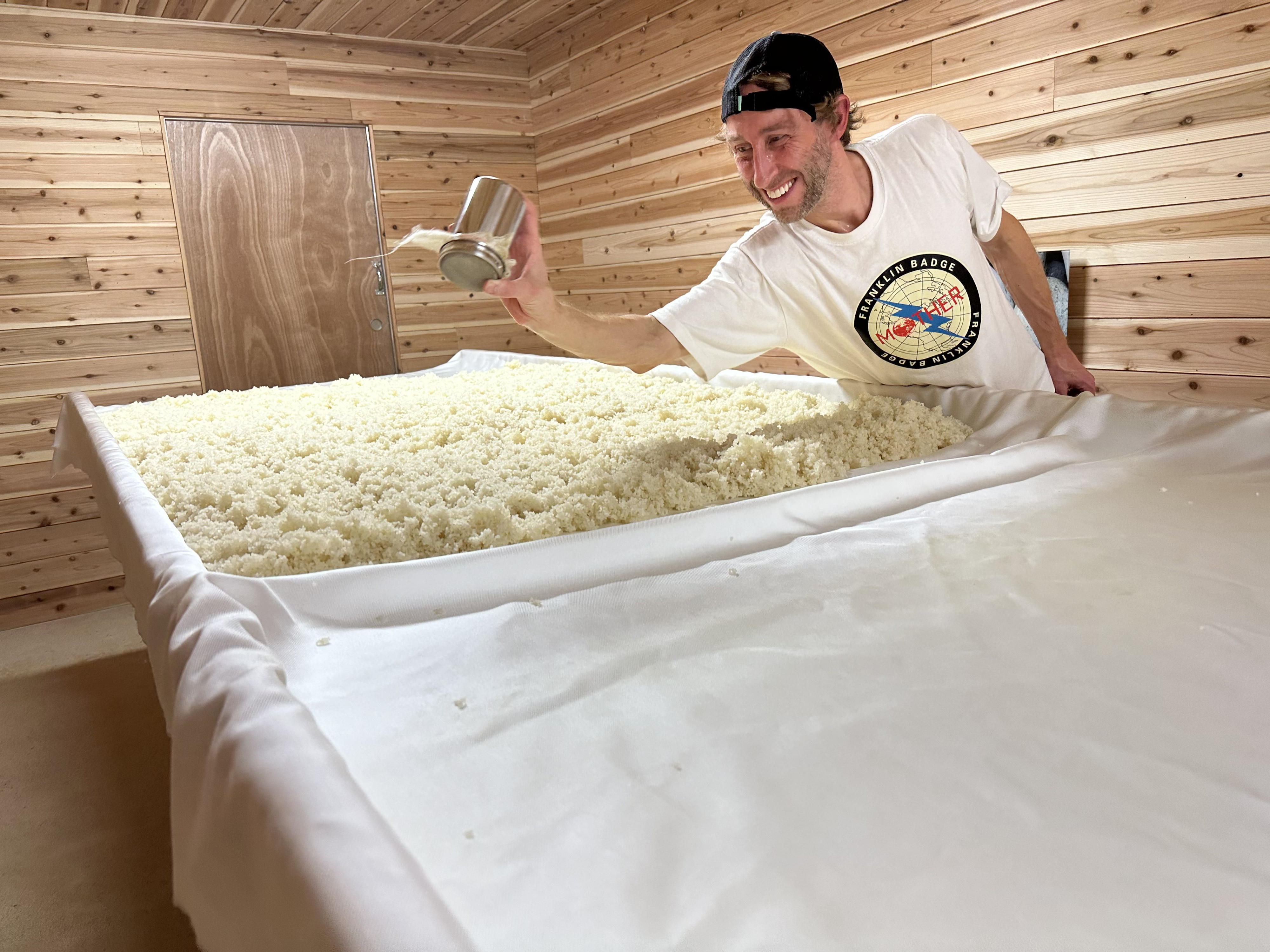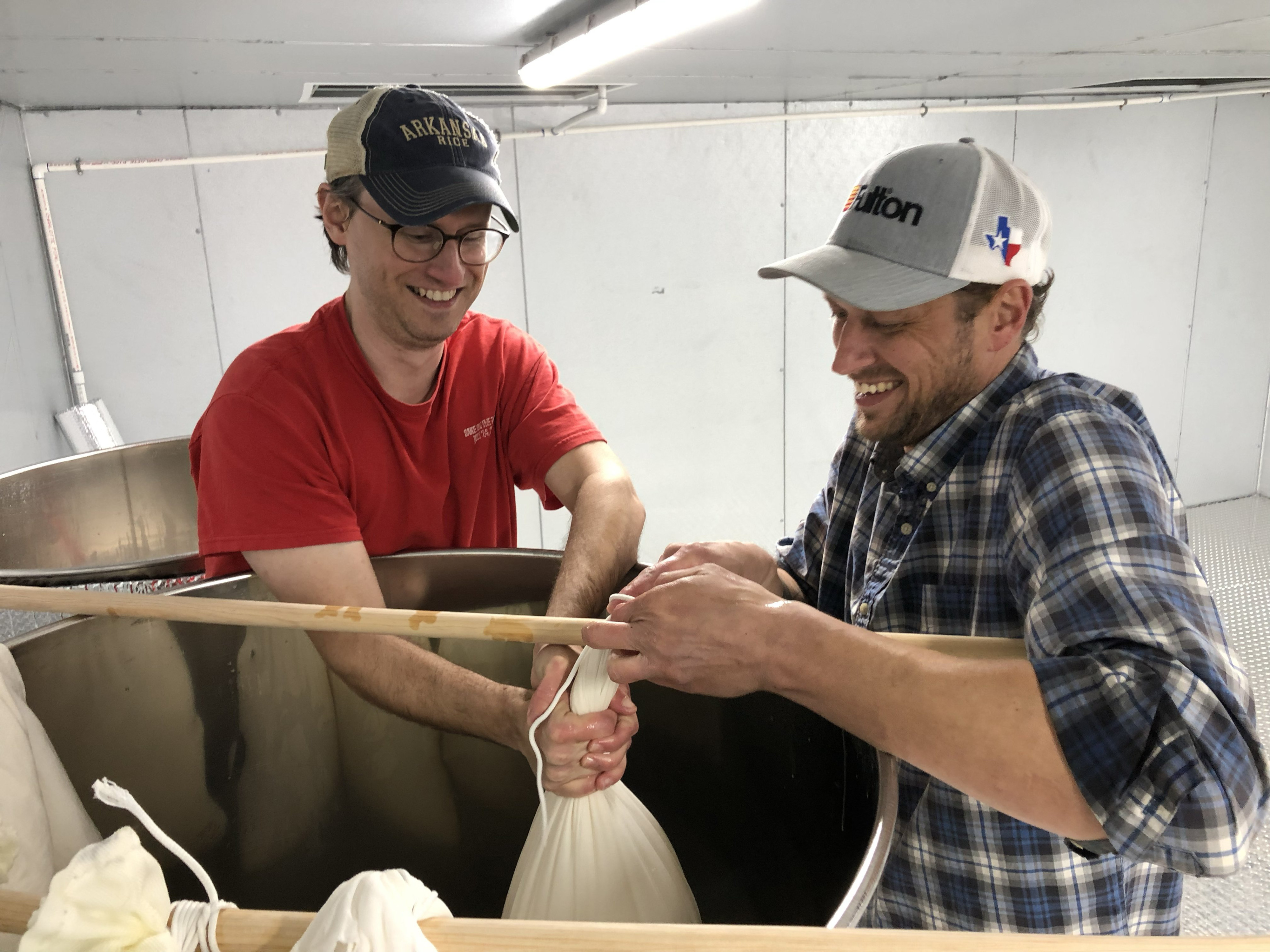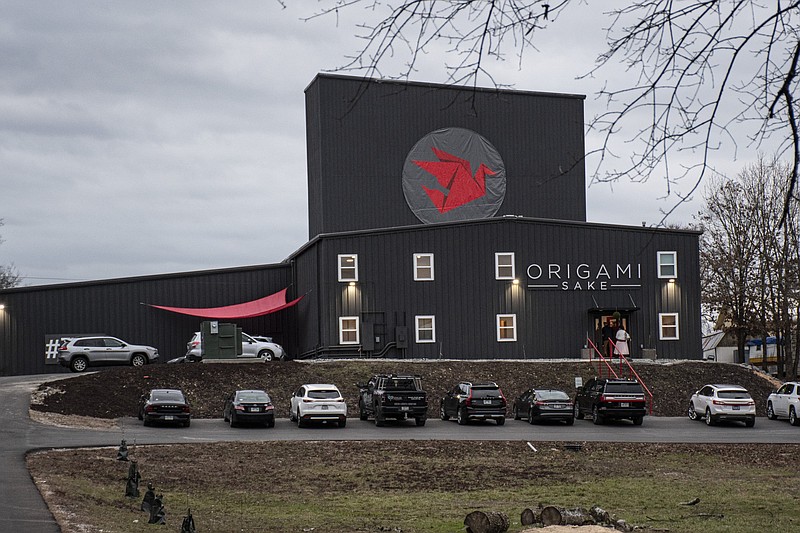What do you get when you combine some of the world's most unique water and rice, grown in the crop's North American center?
If some Arkansas entrepreneurs have anything to say about it, the beginning of a sake revolution, headquartered in the Spa City.
Founders Ben Bell and Matt Bell (unrelated) are the visionaries behind Origami Sake. Production of the beverage is soon to begin in a converted food blending facility in Hot Springs. The undertaking is massive; according to Matt Bell, at 22,000 square feet, the forthcoming brewery will contend for being the largest domestically owned sake brewery in the United States.
"It's a big endeavor and we're leaning in pretty hard on it," he says in the mother of all understatements. "Our production capacity is about 800,000 liters a year starting now, and we can grow that to 2 million."
If the idea of producing huge quantities of a beverage as yet unfamiliar to the vast majority of local consumers feels like the founders have been taste-testing a little too hard, Matt Bell says there's a method to the apparent madness. Unlike craft beer breweries, which generally build a local following before looking at regional or national distribution, Origami Sake is taking the seemingly counterintuitive approach of aiming for national accounts first, he explains.
"The reason we did this as large as we did is, you look at where smaller craft sake breweries are, they're in large cities," he says. "They're in places like Austin, Nashville, Brooklyn, that have a population double that of the whole state of Arkansas within a 25-mile radius. We looked at it from the perspective of not having much local demand initially. We wanted to be able to meet the demands of a chain restaurant or a chain retailer who needs someone that's going to produce domestic sake and quality sake at a good price and do it on a national scale.
"So that's where we started instead of starting in a taproom."
Talking to Matt Bell, a serial entrepreneur whose most recent success was in the solar business, there's not a hint of doubt about the new venture. But even he admits that it took a little while for Ben Bell's pitch about sake to come into focus. The two met in 2016, right after Ben had returned from two years in Japan learning the finer art of brewing the ancient beverage
"Hot Springs' sister city is Huhtamaki, Japan; it's in Iwate prefecture. And Iwate is home of the Nanbu Toji Guild, which is a guild of breweries — one of the most famous and very highly esteemed guilds in all of Japan," Matt Bell says. "They reached out through the Sister Cities program and asked if they could send someone from Hot Springs who was very enthusiastic about learning this trade."
Ben returned with the vision for a production facility in Arkansas, and the more he shared it with Matt, the more intrigued the entrepreneur became.
"He explained it to me in really simple terms," Matt says. "Arkansas grows, currently, 48% of the rice in the U.S. and in particular we grow sake rice. That's unique to Arkansas with the exception of California [which] has a few of those varieties.
"Then you have Hot Springs being known for its quality of water; Ben tested the water in Hot Springs as there are certain things you're looking for and certain things you're not. The water was perfect for sake and it rivaled some of the best regions in Japan known for their water. It had the right mineral content, the right pH as well as the right nonexistence of minerals like iron and manganese.
"'With that combination of rice and water,' he said to me — and I'll never forget it — 'Arkansas should be the Napa Valley of sake.'"
 Justin Potts, director of brewing relations, inoculates rice at Origami Sake Brewery in Hot Springs. (Special to the Democrat-Gazette)
Justin Potts, director of brewing relations, inoculates rice at Origami Sake Brewery in Hot Springs. (Special to the Democrat-Gazette)
SAH-KAY, NOT SAH-KEE
It's hard to imagine something as widely recognized as the word "sake" being any less understood than the Japanese beverage is, particularly to American audiences. For one thing, sake is not the name of one drink, but the Japanese term for all alcoholic beverages (the proper term is nihonshu, per sakehub.com.)
As if that weren't cutting enough cultural corners, many people go a step further and mispronounce the already overly-general term as sah-kee instead of sah-kay.
The third widespread fallacy is the belief that sake is rice wine, which it is not. Booze 101 tells us there are three ways to produce alcoholic beverages — brewed, as in beer; fermented, as in wine; and distilled, as in whiskey, vodka and tequila. Sake is brewed from just a few ingredients and therefore is a cousin to beer, except that at an average alcohol by volume (ABV) of 15% to 16%, sake's alcohol content is much higher than beer and north of many wines.
Beyond that, similarities to beverages Americans are acquainted with are hard to come by, starting with the production process. Sake is made with rice, water, yeast and koji, scientific name aspergillus oryzae. While any rice can be used, certain varieties provide the ideal combination of protein, fat and starch. Matt Bell explains the rice is polished with special equipment that strips away the outer layers of the grain, leaving the starchy core. Premium sake may use rice reduced by half, whereas the industry standard might polish away 30% of the exterior. After being washed and steamed, a portion of the rice is combined with koji, a mold spore that helps break down starch into sugars.
"The process is called multiple parallel fermentation and sake is the only beverage made this way," Bell says. "After you make koji, it's about a three-day process; the rice looks white, fluffy and drier and it's basically encased with this koji mold. You can eat it just like you can eat blue cheese or any other molded, fermented product."
Sake brewing is a meticulous process and greatly reliant on exact timing. It's also a marvel of natural chemical processes; a skilled brewer can produce flavors without adding flavoring simply by manipulating the simple components. It's one of the elements of the drink that led the Arkansas operation to its name — in the art of origami, multiple figures can be fashioned from the same sheet of paper; it's all in how you fold it.
"Fruit-forward sake means that it has a fruit flavor, but there are no added fruits," Bell says. "The way you get these different flavor profiles is through the process and through yeast selection. The yeasts have esters and the esters in the yeast will emit the flavor profiles that you want. There's multiple yeast strains out there for sake and depending on what you want to make, you use that different yeast."
The secret weapon in Origami Sake's arsenal is the rice, over which the new venture doesn't need to worry as much about supply chain, given some of the most coveted rice is grown right here on Arkansas' Grand Prairie. Chris Isbell, his son Mark and other relatives own Isbell Farms, a 3,500-acre, sixth-generation rice growing operation in Humnoke.
RICE STARS
Isbell, who describes himself as "passionately curious," remembers looking for ways to diversify from strictly long grain table rice. Years ago, he began to hear from Japanese delegates at trade association events about rice varieties preferred for sushi.
"It seems like everybody in Japan thought at that time that that rice would only grow in Japan," Isbell says. "When we started growing and selling it, we were overcome with Japanese newspapers, television, magazines. All the trading companies visited here. We had helicopters and limousines and finally Greyhound buses bringing Japanese visitors out to the farm. That went on for about three years."
He chuckled. "We were kind of dumbfounded. We're just farmers, we thought, but all of a sudden, we're well-known in Japan."
The Isbells were even invited by the Japanese government to visit the country, tour rice farms and speak at colleges on their rice operations. The networking came in handy some 20 years ago when they repeated the feat with a prized strain of sake rice. This touched off another parade of visitors to see what the family was growing out of the Delta.
"We know lots of people in Japan and we have visitors all the time," Isbell says as casually as talking about a neighbor dropping by. "We've got visitors coming next week, eight people here from a sake brewery in Japan. It's really never stopped since the sushi rice, but the sake rice is making it start again."
Isbell says sake rice isn't harder to grow, although its tall profile and tough stringy stems make mechanical harvesting something of an art form. As demand from breweries has grown, the farm is adding different strains to give clients a choice in sake rice.
"We have four different varieties that we grow for sake," he says. "We feel like the American market will be a little bit different from the Japanese in that all of these craft breweries are going to be just like the craft beer breweries; they're going to try something different. So, if one of them is using the Yamada Nishiki [variety], for instance, then the other one wants to try something different."
 Vice president Ben Bell and Cassady Harris, director of operations, gravity press the first batches of sake at Origami Saki Brewery in Hot Springs. (Special to the Democrat-Gazette)
Vice president Ben Bell and Cassady Harris, director of operations, gravity press the first batches of sake at Origami Saki Brewery in Hot Springs. (Special to the Democrat-Gazette)
RIGHT TIMING
The timing of the Hot Springs operation appears to be spot-on as both U.S. demand and production have been steadily growing of late. Thrillist reported in 2021 that sake breweries in the United States have increased fourfold in a decade and that the U.S. was the biggest importer of Japanese product. While this bodes well for Origami Sake's national presence, Matt Bell says there's still a lot of education that needs to be done locally to turn beer and wine drinkers on to sake.
"Part of the problem with sake in America is it's inaccessible to the normal American," he says. "You go into a store and unless somebody's hand-selling it to you, you're confused on what you're buying. You don't know the terms, daiginjo, ginjo, nigori. There's not any explanation of what you're buying.
"We're doing away with all the sake terminology and just explaining tasting notes to the clients and simplifying access and making it to where someone feels comfortable pulling it off the shelf and not looking dumb when buying something."
Bell says Origami Sake's product is likely to feature its own personality, to better suit the domestic palate. Its first product, A Thousand Cranes, is a fruit-forward beverage that when served chilled is so close to wine that Bell insists it would fool all but the most sophisticated palate.
"Sake has really only been in Japanese restaurants; you generally can't get it in American restaurants or Italian, or whatever," he says. "A lot of the sake in the market is suited for Japanese cuisine. It's a lot of different flavors that you wouldn't necessarily pick up and eat with a steak or a burger.
"We're not looking at it as a beverage to just pair with Japanese cuisine, we're looking at it as a beverage that is going to meet the customers where they are and chefs where they are. We're creating different flavor profiles based on pairings with food that are general American cuisine."
Origami Sake was also built to produce the most environmentally friendly sake on the market, with the brewery powered by solar-generated electricity. Bell predicts the brewery will be the first net-zero certified sake manufacturer in the United States and is working toward a zero-waste production protocol. He estimated the cost of the venture, set to open later this spring, at between $5 million and $10 million to build out and equip. He predicts the brewery, which will have a small tasting room, will also eventually create 12 to 18 jobs.
As for Isbell, he's happy to be fueling a sake venture right here in Arkansas. He says he feels a kindred spirit with the owners of Origami Sake, knowing what it feels like to have one's strategic vision mistaken for a fool's errand.
"We have kind of been in the know from the very beginning of their organization," Isbell says. "When they said they were going to build a sake brewery we knew they're going to need rice, and they knew we had it. We want to support them as much as we can in their use of the rice.
"I've been to Japan seven or eight times and every time you go over there, somebody's trying to get you to try the sake. I didn't care for it, it tasted like kerosene and dirt to me. But my son-in-law brought a sample of Origami Sake they made the other day, and it's great. It's excellent quality."
